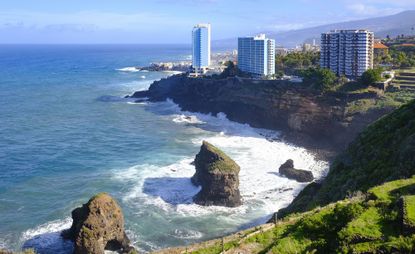This holiday advice video from counterterrorism police could save your life
How to actually respond to a firearms or weapons attack abroad (or anywhere)


How to actually respond to a firearms or weapons attack abroad (or anywhere)
It's worth starting this by saying that while terrorist attacks in the UK and abroad are rare, they can happen. But, as the saying goes, 'failing to prepare is preparing to fail,' which is why counter-terrorism police have released a public video to encourage the travel industry and holidaymakers to stay alert and safe during their summer holidays.
After seeing how Borough Market bounced back after the London Bridge attack, the British community has banded together more now than ever - and the authorities are giving the British public advice videos on how to stay safe. It's just the same as thinking about all the things you need to know before embarking on a solo travel trip or as watching an inflight safety video.
The new film highlights the 'run, hide, tell' anti-terrorism safety message in a holiday scenario.
Police have also explained that there is no intelligence that holidaymakers are at risk but that this video is part of a campaign to raise awareness.
The national co-ordinator for the protect and prepare strategy, Detective Chief Superintendent Scott Wilson, has said: 'The chances of being caught up in a terrorist incident are still low, but sadly we have seen atrocities take place in the UK and abroad. So it is important everyone stays alert and knows what to do if the worst was to happen. We want people to think of this in the same way they do the safety film airlines show before take-off. They don't expect anything bad to happen but it is a sensible safety precaution to show people what to do.'
What to do in the event of a weapons attack
If you hear gunshots, think about your safest route
'If there is a safe route, run. This is the best option. Act quickly. Leave belongings behind and insist others go with you. Don’t let their indecision slow you down.'
Marie Claire Newsletter
Celebrity news, beauty, fashion advice, and fascinating features, delivered straight to your inbox!
Once you identify a safe route, run
'Make sure your route doesn’t put you in the line of fire. Consider your exits and find an escape route. If your escape route is no longer safe. Find an alternative. Avoid deadness and bottlenecks.'
If you can’t move to safety, then hide
'The best places to hide with protection from gunfire will have a solid physical barrier between you and the attacker. Lock yourself in and move away from the door.
Barricade yourself in if you can. Turn your mobile phone to silent and switch off vibrate and stay as quiet as possible. Don’t shout or do anything that could give away your hiding place.'
Only when you are safe, call the police
'Tell them clearly where the attack is happening, where you are and how many attackers you have seen. Give the direction the attackers are moving in. Describe the attackers. When the police arrive, they will be armed. They will deal with the immediate threat first to prevent further casualties. This could take some time. The police may be unable to distinguish between you and an attacker. They may treat you firmly. Do everything they tell you to. Don’t make any sudden movement or gestures that could be seen as a threat. Stay calm. Don’t shout or wave and keep your hands visible so they can see you’re unarmed. Police may ask for details about the building, the attacker, any hostages and casualties.
Only when the threat has been neutralised will you be evacuated to safety.
These kinds of attacks are rare but having a plan, knowing how to respond and being prepared will help you stay safe and could save your life.'
-
 Zendaya's reaction to awkward kissing question during Challengers interview has gone viral
Zendaya's reaction to awkward kissing question during Challengers interview has gone viral'Uncomfortable' doesn't begin to cover it
By Iris Goldsztajn
-
 Prince William feels 'immense responsibility' amid Kate and Charles cancer diagnoses
Prince William feels 'immense responsibility' amid Kate and Charles cancer diagnosesHe has a lot on his plate
By Iris Goldsztajn
-
 Taylor Swift just teased a 'timetable' for her new album release
Taylor Swift just teased a 'timetable' for her new album releaseThe wait is torture
By Iris Goldsztajn